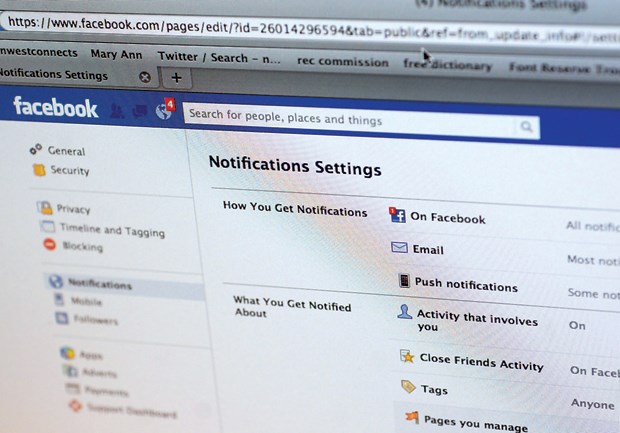The Digital Age’s designers, most of whom are white, male, highly paid Star Wars enthusiasts who live in the San Francisco area, have two rules about life: 1. you are not allowed to be bored; 2. you must be notified about everything.
Rule No. 1 deserves a serious discussion about the loss of reflection in our culture, and thankfully, that dialogue is under way in other forums. Rule No. 2, the subject of this column, deserves a kick in the ass.
This is the time of the ubiquitous reminder, and it’s cool. I’d miss half my meetings each week without reminders from Google Calendar or Exchange, and I wouldn’t get out of my office chair as much for walks every day without my Fitbit reminding me of the steps I need to reach my daily quota.
But as our devices and online services gather more information about our lives, we’ve crossed over from helpful reminder to annoying, if not creepy, intrusion. Our lives are crowded with digital noise. That’s why for me 2014 is about reducing that noise in three key areas: my smartphone, because it goes with me everywhere; Facebook, because it’s replaced the public square; and Amazon, because its habit of following you wherever you go on the web with targeted advertising is a model for invasiveness.
When I first got a smartphone, I was enthralled. It would beep and whistle at every event going and I was never out of the loop. New email came in? Beep! New Twitter follower? Weet! Text, voice mail, calendar invitation, breaking news from the CBC? Wheep, bloop, ding, whoosh! That was fun, for about a week.
That’s when I realized an event-emitting smartphone is like travelling in the car with a three-year-old identifying every person, object and event along the route. Look, it’s a man! Look, it’s a box! Look, it’s a man with a box!
I’ve since cut down on the event reminders on my current phones dramatically, and that includes visual alerts and banners in addition to sounds. My personal phone, an HTC 8X running Windows Phone, makes noises for incoming calls, texts and calendar entries and that’s it.
The rest I don’t need to know about until I decide I’m ready to check individual apps or services. I’ve done the same for my work iPhone. If I want to find out about messages or events on Facebook, Twitter or news apps, Windows Phone’s tiles display silent, unobtrusive notifications, and even these can be turned off at will.
The iPhone has iOS7’s more efficient notification window shade, which if you configure it properly can be blissfully quiet and restrained. I only see what I want to see when I want to see it, not because my phone is screaming and doing a light show.
Keeping your phone quiet requires digging deep into the settings and turning things off. Notification settings are not always easy to find, since smartphones are not designed to be passive.
The pasty dudes in the San Francisco area making these things stayed up late into the night finding just the right light sabre sound for your incoming email and they’ll be damned if it’s rendered mute.
You’ll also need to be vigilant when installing new apps, because they, too, are designed by default to bug you with reminders.
In iOS7, head to the Notification Center, where you can decide how and if your phone’s services and apps will remind you of events.
You can choose visual banners at the top of the screen, alerts on the central part of the screen, or sounds. Depending on your desire for quiet, you can turn most of these off.
From there, head in the settings menu to Sounds and turn off as many sounds as you can for events you don’t need to know about at the very second they occur.
Turning off the incoming email sound alone is key to a happier day. In Android, notification settings are found mainly under Device, Apps, where you can opt out of notifications for each app.
Annoyingly, you can’t turn anything off without receiving a “do you really want to do this and be ignorant?” nag message. Thanks, Luke Skywalker wannabe.
Next week: part two, in which we work to silence Facebook and Amazon.



